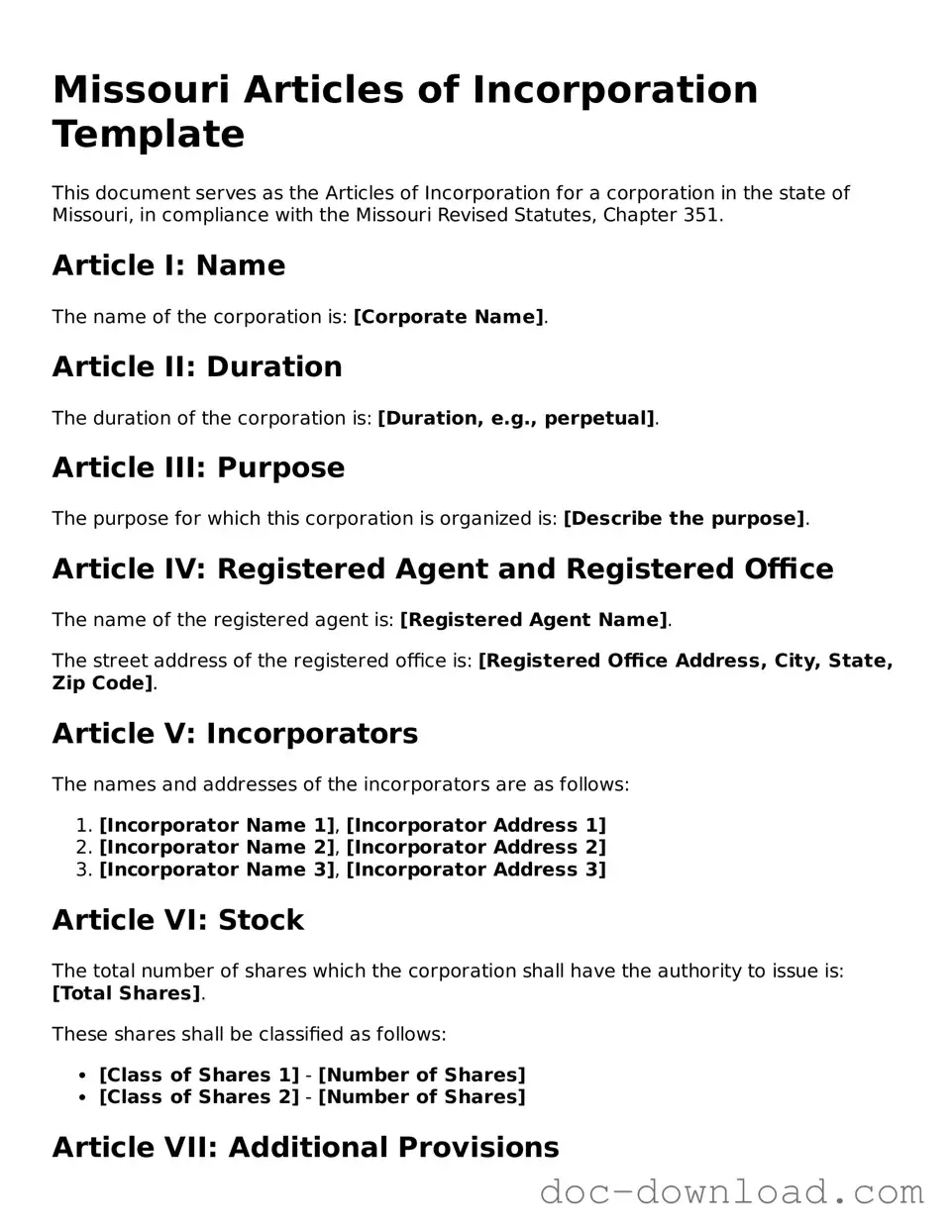The Missouri Articles of Incorporation form shares similarities with the Certificate of Incorporation, which is used in many states to establish a corporation. Like the Missouri form, this document outlines essential details such as the corporation's name, purpose, and registered agent. Both documents serve as the foundational legal paperwork needed to create a corporation, allowing businesses to operate as separate legal entities from their owners.
For those interested in safeguarding sensitive information, a fundamental step is obtaining a Non-disclosure Agreement template. This is crucial for any business transaction or collaboration. You can find a helpful resource here: easy-to-use Non-disclosure Agreement form.
Another document akin to the Missouri Articles of Incorporation is the Bylaws. While the Articles set up the corporation, Bylaws govern its internal operations. They detail how the corporation will be managed, including rules for meetings, voting procedures, and the roles of officers. Both documents are crucial for ensuring that a corporation runs smoothly and in accordance with state laws.
The Certificate of Formation is similar in function to the Articles of Incorporation, particularly in states that use this terminology. This document serves the same purpose: to officially create a corporation. It typically includes the corporation's name, address, and the names of its directors. Like the Missouri form, it is filed with the state to gain legal recognition.
Operating Agreements, often used for Limited Liability Companies (LLCs), bear a resemblance to the Articles of Incorporation in that they establish the entity's structure. They outline the management, responsibilities, and operational procedures for the LLC. While the Articles focus on the corporation's formation, Operating Agreements provide a roadmap for day-to-day operations.
The Partnership Agreement is another document that shares similarities with the Articles of Incorporation. This agreement outlines the terms of a partnership, including each partner's contributions, profit-sharing, and responsibilities. Both documents are foundational in establishing the legal framework for a business, ensuring that all parties understand their roles and obligations.
Incorporation Documents from other states, like the California Articles of Incorporation, follow a similar format and purpose. They require information about the corporation's name, purpose, and registered agent. Each state has specific requirements, but the fundamental goal of legally establishing a business entity remains the same across state lines.
Business Licenses also bear some resemblance to the Articles of Incorporation. While the Articles establish a corporation's legal status, business licenses grant permission to operate within a specific jurisdiction. Both documents are essential for compliance with state and local regulations, ensuring that a business can legally engage in its activities.
Shareholder Agreements are similar to the Articles of Incorporation in that they define the relationship between shareholders in a corporation. These agreements outline rights, responsibilities, and procedures for buying or selling shares. While the Articles create the corporation, Shareholder Agreements help manage relationships among those who own it.
Nonprofit Articles of Incorporation are closely related to the standard Articles of Incorporation but are specifically designed for nonprofit organizations. They include similar information about the organization's purpose and structure but also address the nonprofit's mission and how it will operate. Both documents are essential for establishing the legal framework of the entity.
Finally, the Assumed Name Registration (or DBA) form resembles the Articles of Incorporation in that it allows businesses to operate under a name different from their legal name. While the Articles create the corporation, the DBA registration ensures that the business can market itself under a chosen name, providing flexibility in branding and operations.
